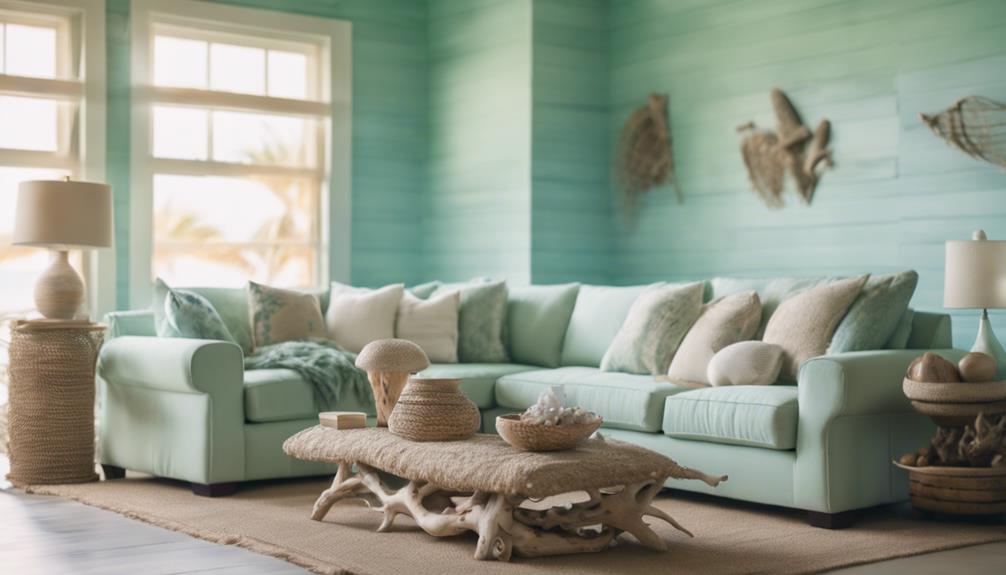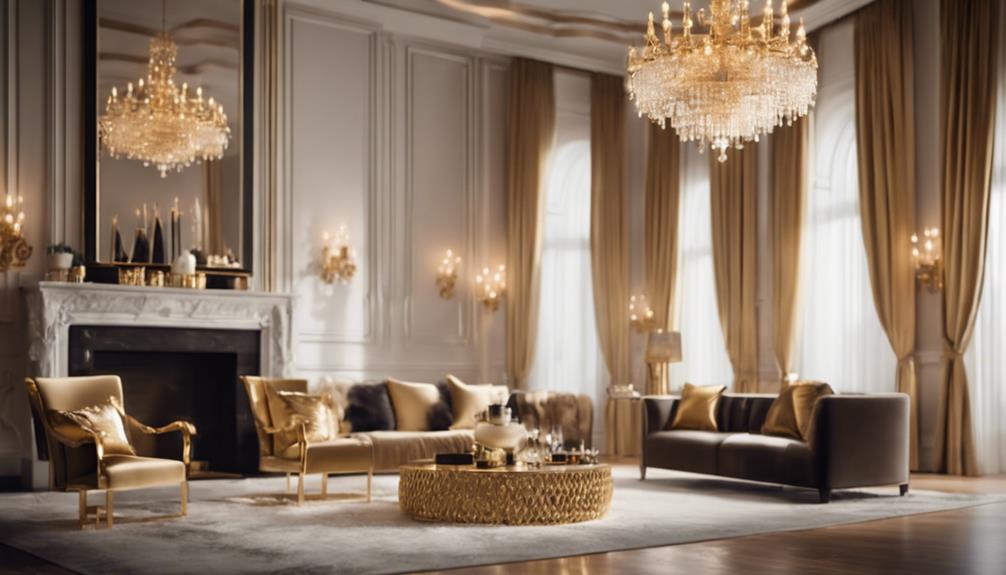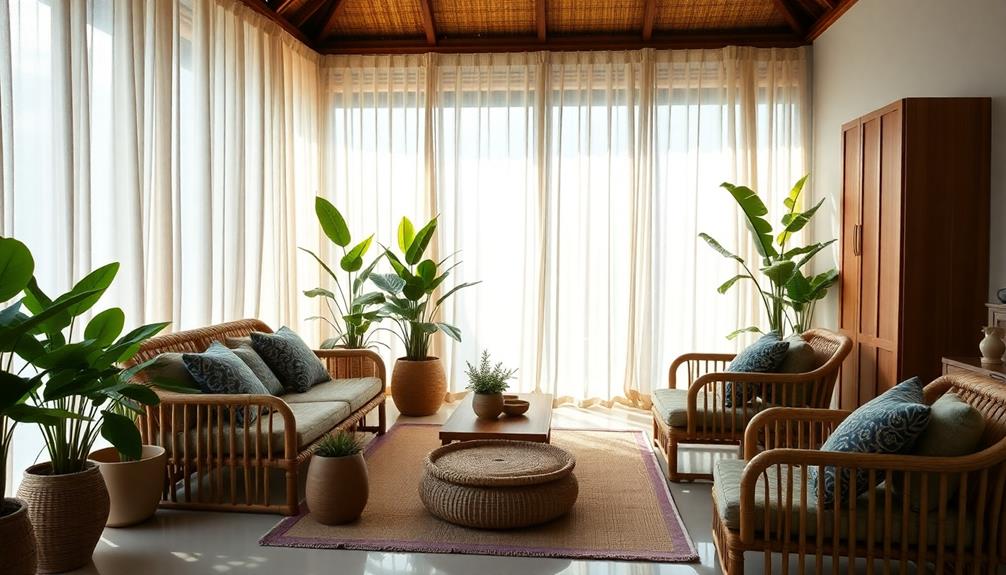You can achieve a stylish beach house look without breaking the bank by repurposing old furniture, scouring thrift stores for unique vintage items, and crafting beachy wreaths using seashells and beach glass. Upcycle old bottles and trays with chalk paint, and transform recycled materials into nautical-inspired decor. Mix old and new pieces for an eclectic style, and incorporate faux nautical antiques for coastal charm. With a little creativity, you can bring the beach to your home affordably. By embracing sustainable decor, you'll not only save money, but also contribute to a more eco-friendly lifestyle – and that's just the beginning.
Key Takeaways
• Repurpose old furniture with fresh paint or new slipcovers to create a coastal look on a budget.
• Thrift stores and flea markets offer unique vintage items that can be updated for a beachy vibe.
• Use chalk paint to revamp old bottles, trays, and other items for a coastal-inspired decor.
• Create beachy wreaths using seashells, beach glass, and other natural elements for a budget-friendly accent.
• Upcycle recycled materials into nautical-inspired decor to achieve a stylish beach house look without overspending.
Coastal Chic on a Shoestring
To achieve coastal chic decor on a budget, start by repurposing old furniture with a fresh coat of paint or new slipcovers. This DIY coastal approach not only saves you money but also reduces waste and adds a personal touch to your space.
Thrift stores are a great resource for affordable, one-of-a-kind pieces that can be refinished or repurposed to fit your coastal chic aesthetic. You can find unique items like vintage wicker baskets, distressed wood, or nautical-themed decor that can be easily updated with a fresh coat of paint or new hardware.
Thrifty Decor Finds Revamped
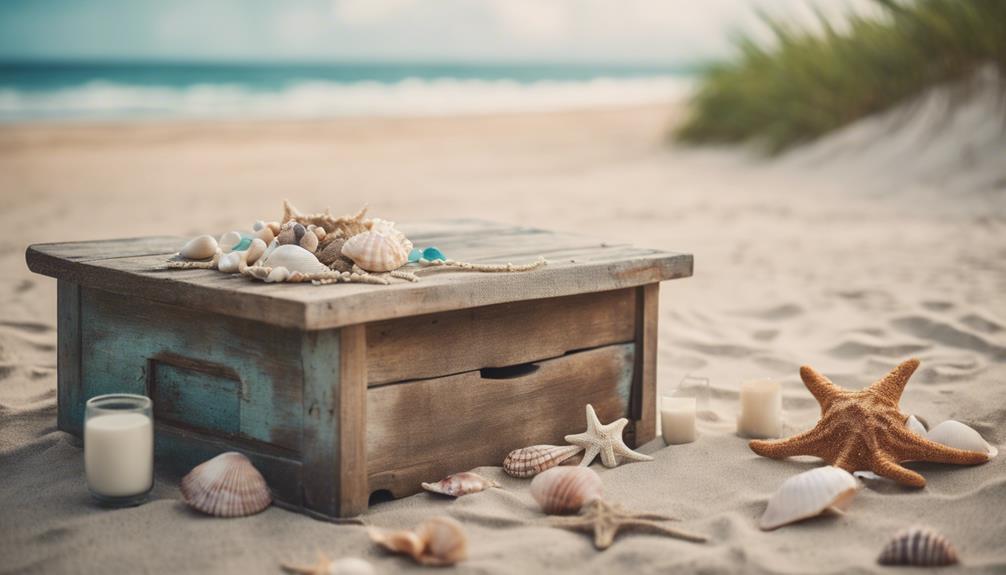
In addition to scouring thrift stores and flea markets, you can uncover hidden gems that, with a little creativity, can be transformed into unique coastal decor pieces that reflect your personal style.
With a can of chalk paint, you can revamp old bottles and trays into stunning coastal decor pieces that fit your budget-friendly beach house makeover. Add some coastal accents, like seashells or starfish, to give them a beachy vibe. You can also incorporate faux nautical antiques, like a DIY diving helmet, to add a touch of coastal charm to your decor.
Additionally, you can craft a beautiful beachy wreath using seashells and beach glass for a free and creative decor piece for your front door. By embracing the beachy vibe and repurposing everyday items, you can create stylish coastal decor finds without breaking the bank.
With a little imagination, you can turn recycled materials into nautical-inspired items, like transforming a light fixture into a coastal decor piece.
Turning Trash Into Treasure
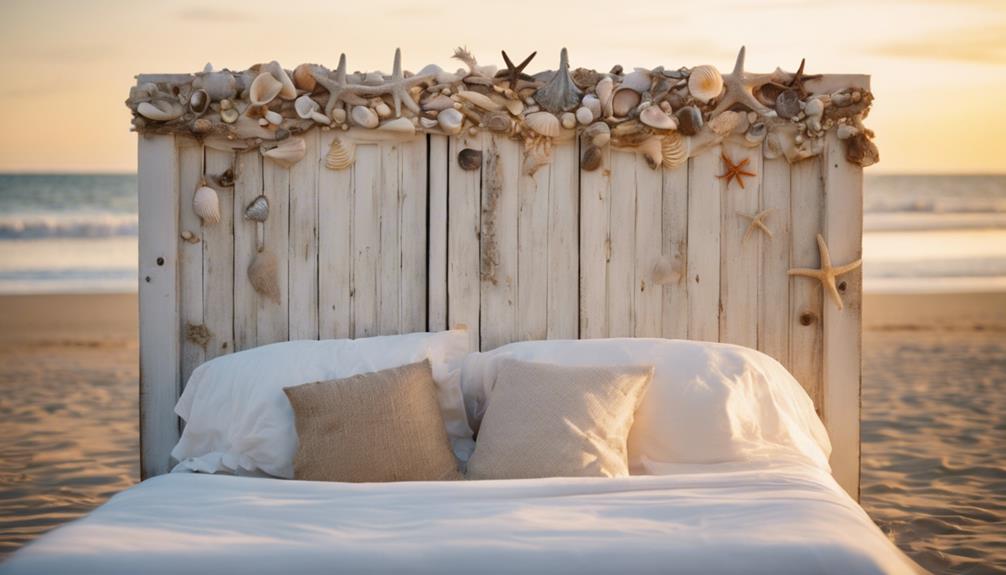
As you explore the world of beach house decorating on a budget, you'll soon discover that transforming trash into treasure is a clever way to infuse your space with unique coastal charm.
By repurposing discarded items like driftwood, seashells, and vintage nautical finds, you can create one-of-a-kind decor pieces that reflect your personal style.
With a little creativity, you can turn what others might see as trash into treasured possessions that add character to your beach house.
Repurposed Decor Finds
Your beach house decor can take on a unique, eco-friendly twist when you scour thrift stores, garage sales, and even your own backyard for hidden gems to repurpose into coastal treasures. By doing so, you'll not only save money but also add a personal touch to your beach house.
Repurposed decor finds can be a game-changer in coastal decorating, allowing you to think outside the box and create one-of-a-kind pieces that reflect your personal style. For instance, upcycling old items like driftwood, bottles, or jars can create stunning beach-inspired decor pieces that are both budget-friendly and environmentally friendly.
By finding inspiration in unexpected places and transforming them into coastal treasures, you'll be reducing waste and saving money in the process. This creative approach to decorating won't only make your beach house stand out but also contribute to a more sustainable lifestyle.
Vintage Coastal Charm
Transforming discarded treasures into coastal decor masterpieces is an art form that can elevate your beach house style, and you're about to become a master craftsman.
By upcycling old items like driftwood, shells, and bottles, you can add a touch of vintage coastal charm to your beach house decor.
Scouring thrift stores or garage sales for hidden gems is a budget-friendly way to achieve a stylish coastal look.
Get creative and repurpose items to create unique decor pieces, like a faux diving helmet that adds a charming touch to your beach house decor.
Incorporating beachy wreaths made from seashells and beach glass can also enhance the vintage coastal charm of your home.
Don't be afraid to mix old and new decor pieces to create a timeless and eclectic coastal style in your beach house.
By embracing this approach, you'll be able to achieve a unique and delightful coastal style that reflects your personality.
With a little creativity, you can turn trash into treasure and create a beach house that exudes vintage coastal charm.
Budget-Friendly Coastal Accents
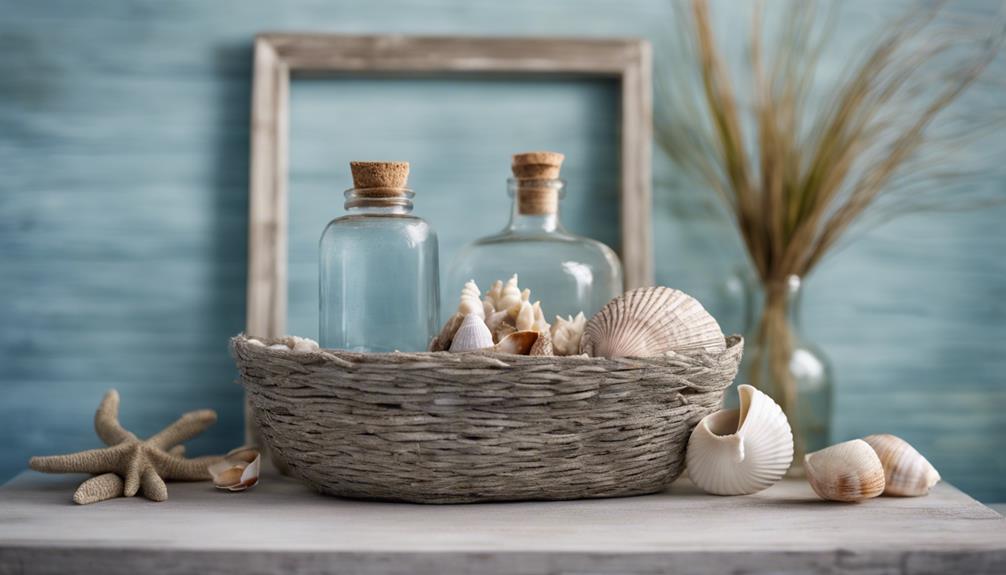
Incorporating coastal accents into your decor doesn't have to break the bank, and you can easily add a beachy touch to your space with thrifty finds like driftwood, seashells, and seagrass. These natural elements bring a sense of the ocean to your home without draining your wallet.
For a more rustic, beach style, look for affordable wicker baskets and seagrass decor pieces that evoke the coastal vibe. You can also get creative and make your own coastal accessories, like painting driftwood or filling jars with seashells. This DIY approach not only saves you money but also adds a personal touch to your space.
Mix and match these coastal accents with nautical ropes, beachy artwork, and blue-hued glass bottles to create a stylish yet budget-friendly coastal look. With a little creativity, you can bring the beach to your home without breaking the bank.
DIY Beachy Decor Essentials
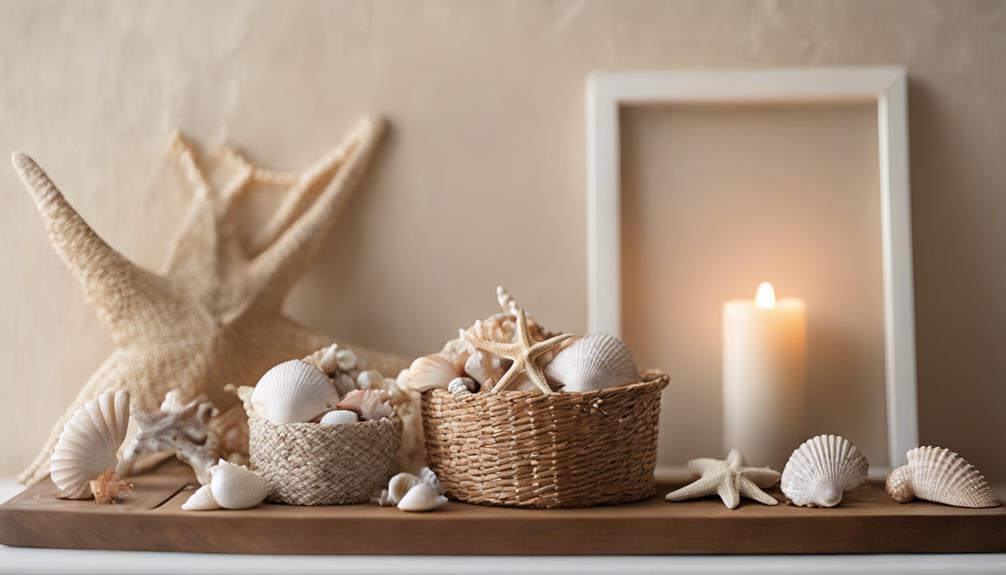
Now that you've started exploring your coastal accents, it's time to get creative and craft your own beachy decor essentials. As you immerse yourself in DIY beachy decor essentials, you'll discover the excitement of transforming ordinary items into unique, coastal-inspired pieces that reflect your beach house living style.
Start by gathering found objects like driftwood and seashells to incorporate into your decor. You can also give plain trays a coastal-inspired makeover with a coat of chalk paint. Upcycle old bottles by spraying them with specialty paint and wrapping them with netting for a beachy, ocean-inspired look.
For a more elegant touch, create faux nautical antiques, such as a diving helmet, to add a touch of sophistication to your coastal home. Finally, craft a beachy wreath using seashells and beach glass for a breezy decor accent that captures the essence of beach house living.
With these DIY beachy decor essentials, you'll be well on your way to creating a coastal home that's both beautiful and budget-friendly.
Upcycled Coastal Creations
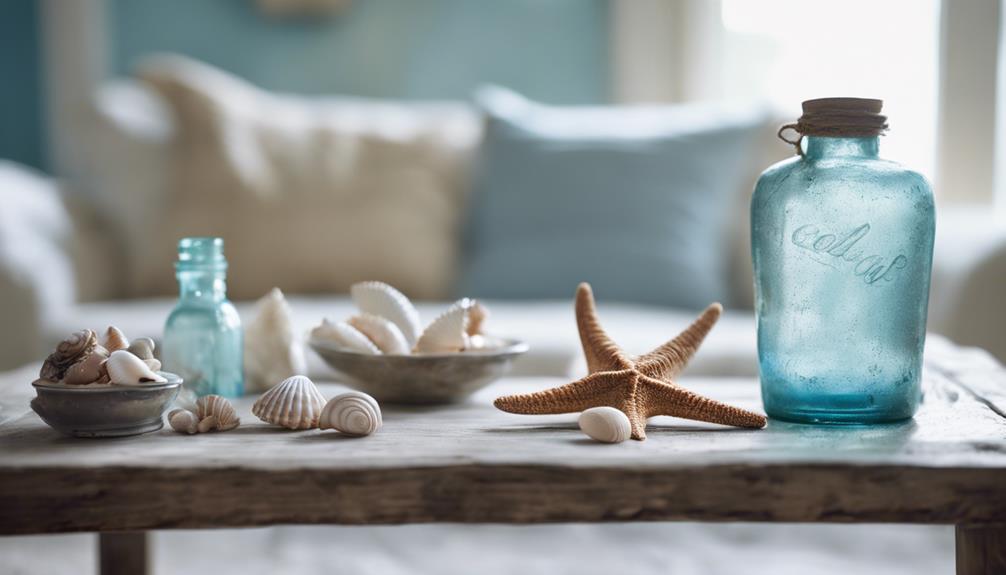
You can breathe new life into discarded items by turning them into unique coastal creations that evoke the spirit of the ocean. Upcycled coastal creations aren't only budget-friendly but also add a personal touch to your beach house decor.
With a little creativity, you can transform ordinary items into stunning coastal pieces that exude a beachy vibe.
Here are some inspiring ideas to get you started:
- Transform plain trays with chalk paint and coastal elements, such as seashells or driftwood, to create a one-of-a-kind decorative piece.
- Upcycle old bottles with specialty spray paint and netting to add a beachy touch to your home decor.
- Create faux nautical antiques, like a diving helmet, from recycled materials for a budget-friendly coastal decor option.
- Craft a beachy wreath using seashells and beach glass collected for free to add a coastal vibe to your front door.
- Utilize beachcombing finds, such as sea glass or driftwood, to create unique coastal pieces without breaking the bank.
Affordable Coastal Style Hacks
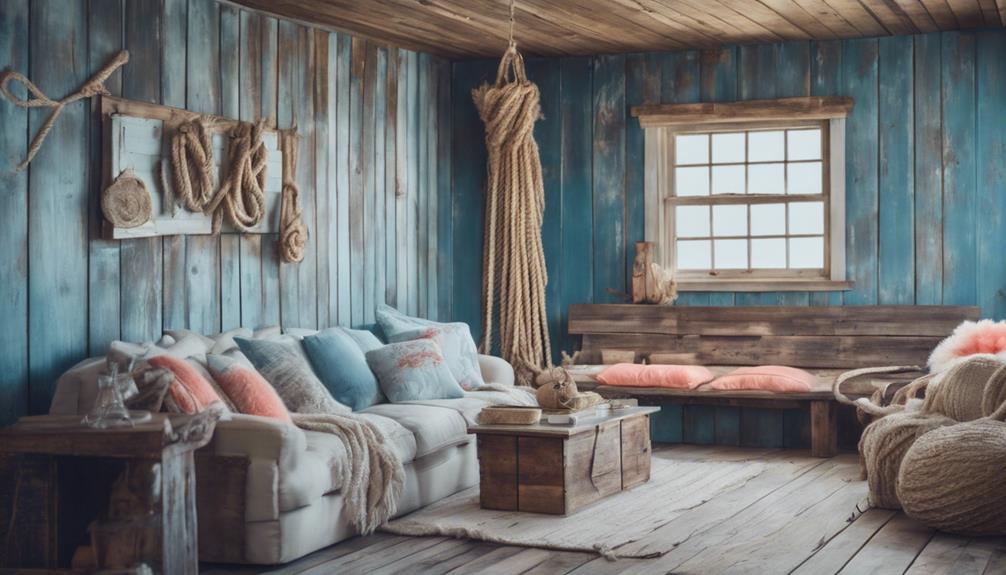
To give your beach house a coastal makeover without breaking the bank, try these affordable coastal style hacks that'll have your home looking like a seaside retreat in no time.
One of the most effective ways to achieve a coastal look on a budget is through upcycling. For instance, you can transform old bottles into beautiful coastal decor pieces, adding a touch of the beach to your home without spending a fortune. Upcycling also allows you to get creative and think outside the box – or bottle!
For example, you can turn a plain tray into a stylish coastal tray with a fresh coat of chalk paint. If you're feeling adventurous, try creating faux nautical antiques, like a diving helmet from a light fixture, to add an elegant coastal touch.
With a little creativity and some DIY options, you can achieve a stylish beach house look without breaking the bank. By utilizing recycled materials and getting crafty, you can bring the coastal vibe to your home without sacrificing style or your wallet.
Frequently Asked Questions
How to Furnish a Beach House on a Budget?
When furnishing a beach house on a budget, you'll need to get creative. Start by scouring thrift stores or online marketplaces for affordable, coastal-inspired decor items like vases, pillows, and wicker baskets.
Consider upcycling or repurposing old furniture to give it a beachy vibe. Look for affordable fabrics like muslin or osnaburg to give your furniture a makeover.
With a little DIY effort, you can create a stylish beach house without breaking the bank.
How to Make a House Look More Beachy?
As you stand in your coastal abode, asking yourself, 'How do I make this house look more beachy?', remember that it's all about evoking the essence of the ocean.
Don't just decorate with beach-themed items; instead, create a cohesive look by incorporating natural textures, calming colors, and subtle nods to the coast.
Think soft blues, weathered wood, and organic accents that whisper 'beachy' rather than screaming it.
How Do You Style a Coastal House?
When styling a coastal house, you'll want to create a cohesive look that evokes the feeling of being by the ocean. Start by selecting a calming color palette that features shades of blue, green, and beige.
Then, incorporate natural elements like driftwood and seashells to add texture and visual interest.
What Are the Trends in Coastal Interior Design?
As you explore coastal interior design trends, you'll notice a focus on soothing hues inspired by the ocean and beach, such as soft blues and greens.
You'll also see a lot of natural elements, like driftwood and seashells, incorporated as decorative accents.
Additionally, budget-friendly approaches like using affordable fabrics for slipcovers, upcycling materials, and giving new life to old furniture with a shabby chic makeover are all on-trend in coastal interior design.
Conclusion
As you've explored these 7 stylish budget-friendly beach house decorating ideas, you've discovered that coastal chic doesn't have to break the bank.
By repurposing, upcycling, and creatively sourcing decor, you can craft a seaside escape that's both beautiful and budget-conscious.
From revamped thrift store finds to DIY beachy essentials, these affordable coastal style hacks have shown you that with a little creativity, your dream beach house can become a reality, without sacrificing style or your savings.
